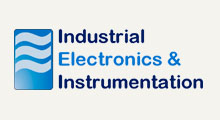Title of the coordinated project: IoT-baSEd mAnagement of bidirectional Wireless power trAnsfer for eLectric vehicLes (SEAWALL)
Subproject: ioT-based power qualIty Data AnaLytics (TIDAL)
Active Projects
About the Project
EVs can be designed to work not only as a load, but also as a generator that supplies energy to the grid (vehicle-to-grid). In this way, EVs become an ally of the electricity grid as they can be regarded as a distributed energy storage system capable of counteracting grid unbalances. This bidirectional energy flow between the grid and EVs would also facilitate the integration of renewable energy sources into smart grids.
One of the most promising technologies for EV charging is based on wireless energy transfer between the charging station and the EV. However, the massive deployment of wireless transfer for EV charging and the use of EVs as bidirectional systems that can contribute to the development of smart grids is a challenge in which several issues should be addressed, such as power quality (PQ) problems, management of the energy exchanged with the grid, optimization of the management of charging points, and interoperability issues between different charging technologies, among others.
The TIDAL subproject is part of the SEAWALL coordinated project, which aims to integrate a large network of IoT sensors in a microgrid consisting of bi-directional wireless electric vehicle (EV) charging (WEVC) available in a car park facility, all connected to a common direct current (DC) bus. The purpose of the IoT power measurement sensors network designed by UCO is to provide real-time information, on one hand, about the power exchange between the microgrid and the AC grid (as the parked EVs can act not only as consumers but also as prosumers); and on other hand, about power quality (PQ) disturbances in the low voltage power grid such as harmonic distortion, voltage unbalance or steady-state voltage variations.
Monitoring the net amount of power exchanged with the main grid contributes to optimizing the sizing and requirements of the main grid infrastructure that supplies the DC microgrid. Moreover, the information about PQ will contribute to preventing the harmonic content of the main voltage grid from increasing beyond certain limits when the net power demanded by the microgrid becomes too large and can be utilized as a restriction to regulate in real-time the power transferred to the loads (i.e., the EV batteries) between a minimum and a maximum.
The IoT edge computing for PQ Data Analysis will add extra functionality to the sensors such us forecasting which will contribute to give early warning alarm functions for anomalies and events. Diagnosis can be done through different mechanisms, for example by establishing a new global PQ metric. Finally, prescriptive actions will also be considered.
Call
- Proyecto I+D+I en su modalidad de PROYECTOS DE GENERACIÓN DE CONOCIMIENTO 2022 MODALIDAD: INVESTIGACIÓN ORIENTADA TIPO COORDINADO, Plan Estatal de Investigación Científica y Técnica y de Innovación 2021-2023.
- Referencia “PID2022-141100OB-C22”.
Partners
- Universidad de Castilla La Mancha
- Universidad de Córdoba


